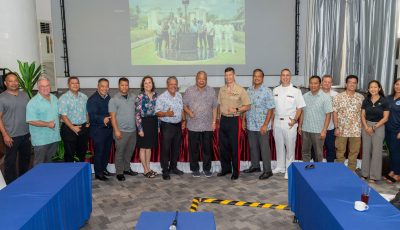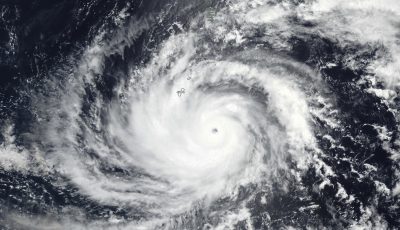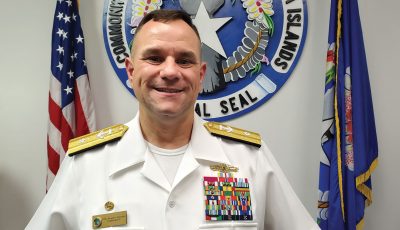RICK’S COLUMN
Demystifying hyper-militarization of the Marianas
Some distinctive characteristics
There are several characteristics that help define our ancient Chamorro Pacific Islander civilization and our Marianas Islands. One distinctive characteristic of our island chain that has been referenced for decades is the idea of where our island chain is located in relation to other places. This characteristic comes up in conversations related to geography and distance. Folks talk about the Marianas being close to the Philippines, Japan, Korea, Taiwan, China, and Russia, and farther away from Hawaii, Alaska, and the continental U.S.
These distance related conversations are usually framed within the context of tourism, civilian flight travel times, most things military related, or where America’s day is supposed to begin. But not as much discussion outside of these topics refers to proximity and distance from the standpoint of how environmentally compromised our island chain has become from military operations, the rare diseases our people have contracted from being exposed to toxins produced by military activity, or the proximity to immediate and complete VA medical care for our military veterans.
Remoteness? Defined by who?
Another distinctive characteristic that is tied to our island chain is this idea that the Marianas are remotely located places. One dominant view messaged by Joint Region Marianas, migrants, Congress, and the military communities stationed throughout the island chain is that locational remoteness has incalculable value in terms of preparing for war. What is odd and telling about this characteristic is that while Joint Region Marianas views our island chain as a place remotely located in relation to Hawaii or Washington, D.C., it also views our island chain as a nearby steppingstone to East Asia. Remoteness and closeness become the oddest of colonizer couples, captured by language that contains words like “military hub” or “power projection.”
One follow-up question that comes to mind is this: “In what other ways are the Marianas Islands considered remote?” Let’s recall that the island chain isn’t remotely located in relation to the ocean or the equator. Our island chain isn’t remotely located to the Chamorro people who have inhabited the Marianas for thousands of years. Our island chain isn’t remotely located to some of the world’s best fishing grounds or some of the world’s best culinary and sailing traditions, some of the oldest languages spoken on the planet or sometimes extreme weather patterns.
What is remote is the unilateral national decision-making authority power found halfway around the world in Washington, D.C. that has brought about tremendous undemocratic change and lasting harm with ironclad control to our total region, Pacific Islander social and political systems, and total environment over the past several decades.
Gof Taddong i Tasi
Another distinctive characteristic of our ancient island chain home is this idea of depth. Depth has many meanings to our families, and it starts with the fact that our Chamorro Pacific Islander civilization is atop the summit of the largest mountain range on earth that we commonly refer to as the Marianas Trench. The production of the Trench and our island chain is an outcome of tectonic plate movement and volcanic activity occurring over tens of millions of years.
The majesty of the Marianas Trench has been the pillar of our unique ocean ecosystem that has been home to some of the best and tastiest reef and deep-sea fish stock in the world, home to some of the rarest marine mammals in the world, and home to some of the most incredible haggan in the world. Deep knowledge of the sea has been produced and shared amongst several of our local fisherman, swimmers, elders, and sailors, who understand currents, tides, winds, stars, and the sheer power of the water that intimately envelops our undersea mountain range and defines us all as Chamorros of the deep blue Marianas.
The darker side of the undersea: Amalgamations of state sponsored violence
Our deep blue ocean mountain environment has also attracted and characterized the evolving and sometimes dark or very dark behaviors of the U.S., Chinese, and Russian militaries, who train for state sponsored violence underwater, but who also have been responsible for damaging and disrespecting our ancient blue ocean mountainous region for external, near seas and overseas contingency security purposes. The Russians and Americans have for decades played this underwater cat and mouse game in our region, where Navy-CIA operations against the Russian Pacific Fleet have been undertaken, resulting in at least one reported undersea collision. American Polaris submarines previously stationed at Sumay, Guam represented the most lethal and invisible arm of America’s nuclear triad for decades, making Guam a Russian military target. The Chinese are now a major participant in patrolling the undersea environment and have more manned submarines than the United States. These expressions of violence have resulted in our deep blue mountain range region being used without our consent for underwater spying, live fire training, communications highway activity, submarine target practice, ocean based nuclear launch platform stationing, massive underwater ordnance explosive testing, which produce a series of dark consequences to include the death of marine mammals and major disruptions to fish stock behavior.
Today, this trend of hyper-militarization continues to grow as one defining and sometimes very dark characteristic, ever-present throughout our ancient island chain region. If we do not reconsider demystifying for ourselves and our Pacific Islander families what constitutes and characterizes great power national and international security and training for war, we can expect our haggan, bunita, and toson as well as our local fishermen, swimmers, divers and sailors to be alongside more and more instruments of war inserted into our ecosystem to include submerged buoys, crewed and unmanned undersea platforms, and greater numbers of crewed and unmanned surface vessels as the American, Chinese, Russian, and DPRK arms race continues.
It is in our collective best interest to begin to teach ourselves and learn more about what constitutes national security and great power relations because our Marianas Islands and our Chamorro civilization continue to be exploited by the United States, China, Russia, and DPRK like few places have ever been.



























